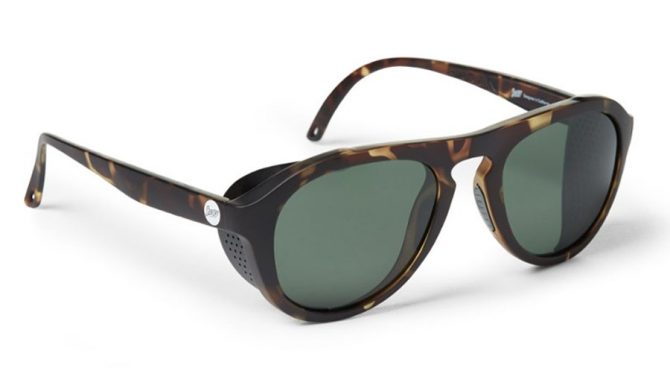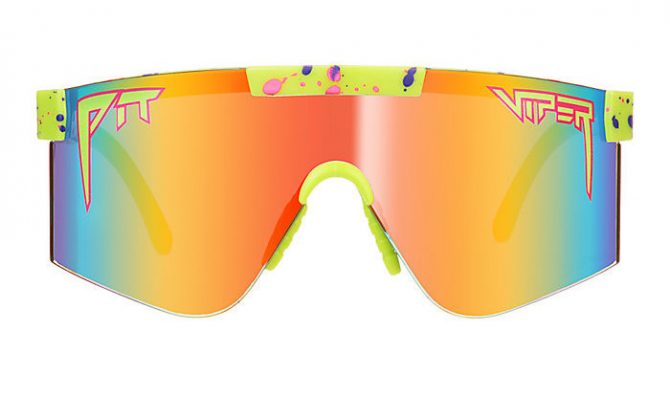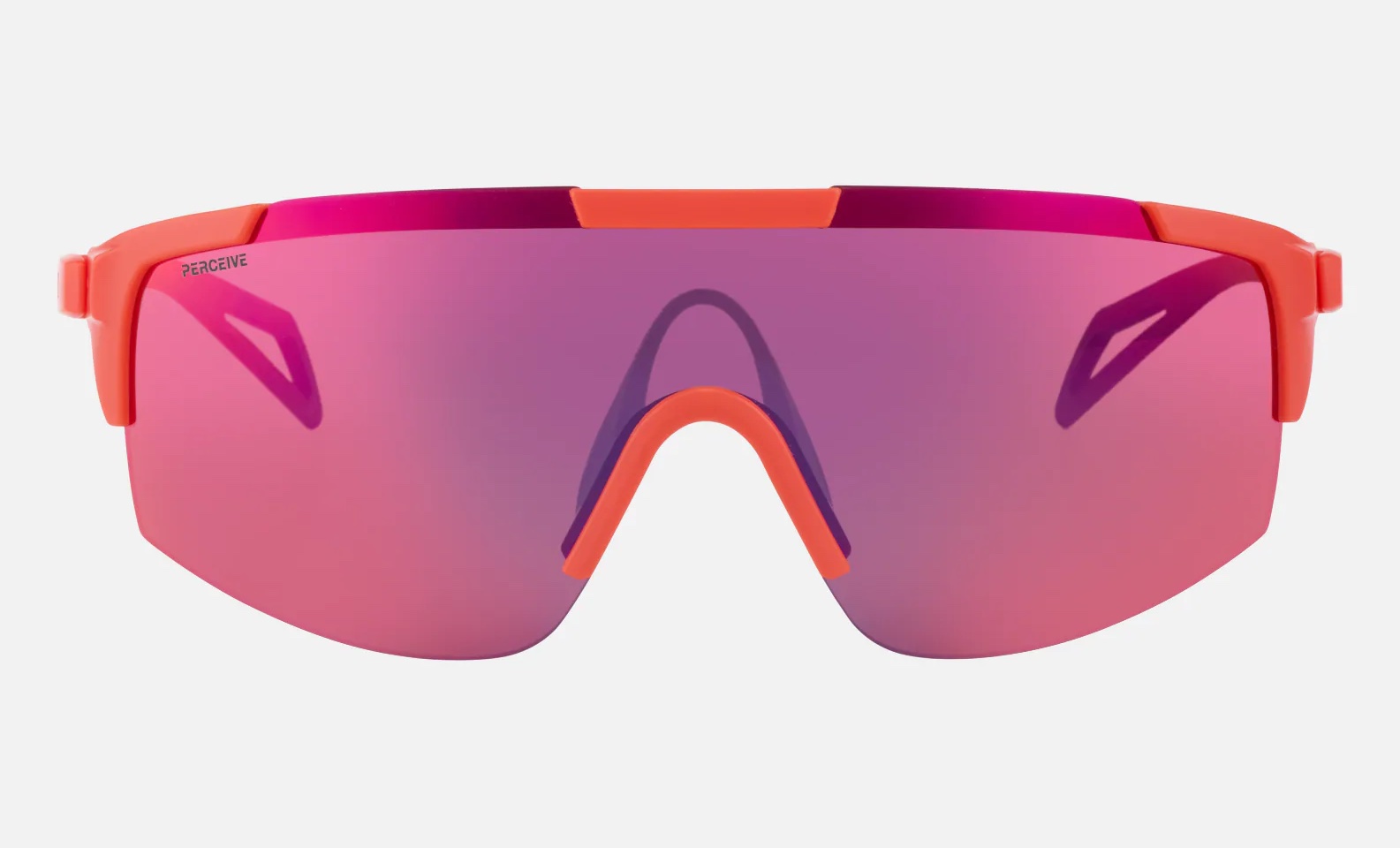
The Tifosi Sledge brings solid photochromic performance at a great price point. Photo: Ryan Salm/The Inertia
Eye protection is vital when out on the slopes. UV rays, snow glare, ice chips, and more provide plenty of potential dangers for what’s arguably your most important pair of sensory organs.
When it comes to protecting your eyes while skiing or snowboarding, goggles are the norm, but sunglasses have their merits as well. It’s liberating to have less-restrictive eye protection equipment, and the increased airflow (read: anti-fog) is a huge boon, especially if you’re up-hilling it in the backcountry. While they don’t offer the full storm-skiing, powder-bashing protection of goggles (some options on this list get really, really close), ski sunglasses can be a fun and stylish choice for bluebird days on the resort, backcountry adventures, the aprés-ski scene, and so much more.
We reached out to the most exciting and innovative sunglass-makers in the outdoors industry, got our hands on their highest-performing and most stylish models, and gave them a run for their money to help you stay informed in choosing sunglasses to play in the snow with.
To learn more about how these ski and snowboard glasses stacked up against one another take a look at our Comparison Table. Or, if you’re curious what makes a good pair of ski/snowboard sunglasses, check out our Buyer’s Guide.
The Best Sunglasses for Skiing and Snowboarding
Best Coverage for Ski Sunglasses: Poc Devour Glacial
Best Lens Technology: Smith Wildcat
Best Photochromic Sunglasses: Julbo Density
Best Aprés-Style Sunglasses: Pit Viper Flip Offs
Best Budget Ski Sunglasses: Sunski Treeline
Best All-Around Ski Sunglasses
Poc Devour Glacial ($250)
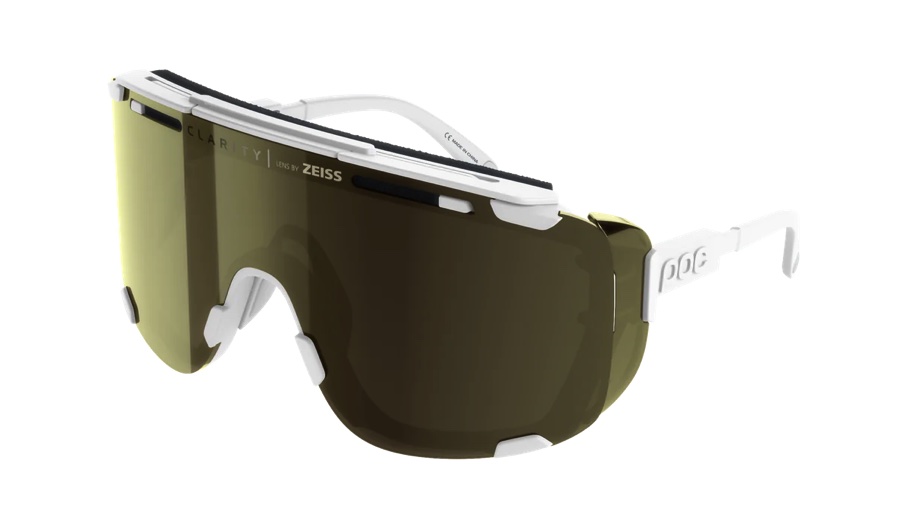
Pros: Swappable lenses, great extra (and removable) coverage at the brow and temples
Cons: Lens-swapping isn’t fast
Fit: Large
Poc’s Devour Glacial sunglasses come about as close to a pair of goggles as you can get in a pair of sunglasses, making them a great choice for skiers who don’t want to sacrifice performance. The wide lens combined with removable panels at the brow and temples provide the best coverage we’ve tried. Best of all, due to the curve of the lens, the side shields do not impinge on peripheral vision whatsoever. Out of sight, out of mind.
The Zeiss lenses provide great clarity but aren’t quite as high-performance in low/flat light as Smith’s ChromaPop technology below. The brow panel is a great, goggle-inspired addition, resting against the forehead with a comfortable foam backer to protect against sun and snow, and we’ve yet to meet it’s like in other sunglasses. And they look good, too, especially (in our opinion) with the mirrored lens.
CHECK PRICE ON AMAZONBest Lens Technology in Ski Sunglasses
Smith Wildcat ($209)

Pros: Swappable lenses, nice, albeit bulky, hard case.
Cons: Lens-swapping is a process, especially with cold fingers.
Fit: Medium
The Wildcats are one of Smith’s most popular action-sports sunglasses, suited to snowsports and really anything you set your mind to. If you plan on going fast, these are the way to go. Coverage is great with a wrap-around lens style and minimalist frame that does little to obstruct your view.
As far as the lens technology, this is where the Wildcats really shine. Smith’s ChromaPop tech is no snake oil – the difference that such a tint makes in terms of visibility on the snow, especially in flat-light conditions, is pretty remarkable. Best of all, it works in both high- and low-light conditions. Our tester tried out the Matte White colorway with a ChromaPop Black lens (VLT 10 percent, Smith’s darkest tint) and was impressed with how well it handled shade as well as sun. The included clear lens is a great addition for night skiing or extremely low-light conditions. Style-wise, they’re definitely steezy out on the slopes, but it’s unlikely that they’d be able to pull double-duty as sunglasses for everyday wear.
CHECK PRICE ON AMAZONCHECK PRICE ON BACKCOUNTRY
Best Photocromic Lenses
Julbo Density ($250)
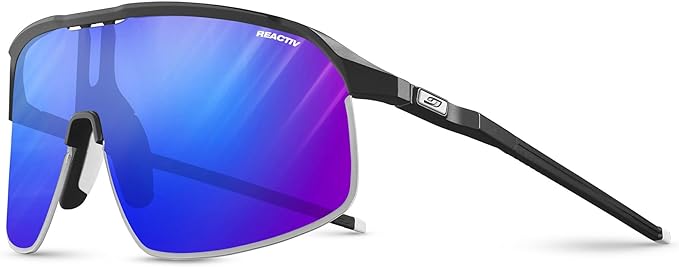
Pros: Great coverage, lots of lens options with impressive photochromic ranges
Cons: Not the most durable design
Fit: Large
Julbo has been a surprisingly big player in the game of snowsports-eyewear recently thanks to some pretty incredible innovations. Their Aerospace vented goggles (which allow the lens to pull away from the frame for extra airflow to combat goggle fog) are a top choice for hard chargers and backcountry riders alike.
The innovations continue with their line of Reactiv lens tech. With varying levels of photochromic tints designed for a wide variety of light conditions (their most adaptable lens can transition from 4-87% VLT, an insane range) Julbo offers options that work to reduce glare, go completely clear for nighttime activities, or enhance contrast.
The Densitys are one of Julbo’s highest-coverage styles, with a wide wraparound lens (that’s vented to prevent fogging) and a super lightweight design. The thin arms extend from the top of the lens, with the bottom of the lenses left open to increase breathability and reduce weight. The only downside to this lightweight design is that they aren’t the most durable of ski sunglasses. We haven’t encountered any issues yet, but If you’re someone who’s hard on their gear, the Julbo Rush, which sports a full frame, might be a better call for you.
CHECK PRICE ON AMAZONBest Aprés-Style Ski Sunglasses
Pit Viper Flip Offs ($100)

Pros: Pit Viper steeze, solid coverage and durable construction
Cons: Not the most high-tech lenses
Fit: Medium/large
Pit Vipers and aprés go together like spring skiing and jeans. Not the most high-performance option available, but scoring high on style, with an attitude to boot. While any pair of Pit Vipers are sure to earn you some gnar points at the base lodge bar, the Flip Offs, as the name suggests, are the epitome of such a “don’t give a you-know-what” attitude, and translate well from the slopes to wherever else you might find yourself.
From a performance perspective, the Flip Offs sport a fairly wide and high-coverage lens that will keep your eyes protected from all but the powderiest of face shots, and grippy, flexible arms that keep these sunnies right where they’re supposed to be – your face. You can even attach a lanyard through the holes at the end of each arm for added security. And, if you find yourself needing a clearer view of what’s ahead, or a dramatic entrance as you stroll into the lodge, simply grab a corner of the lens, and flip them, well, off. You’re sure to get a few oohs or ahhs as you do so.
CHECK PRICE ON PIT VIPERBest Budget Ski Sunglasses
Sunski Treeline ($89)
Pros: Removable side shields provide extra coverage on the slopes but are easily removed for aprés/around town.
Cons: Lenses are polarized but not super high-tech. Side shields limit peripheral visibility.
Fit: Medium
Sunski’s Treeline sunglasses bridge the gap between stylish sunnies and slope-ready shredders. With removable side shields to protect from sun and snow, they score well on coverage but with a slight reduction in peripheral vision, not quite as well as the Wildcats above. We were very impressed by the lens technology these guys make use of. While the tint doesn’t quite make the colors pop as much as the Wildcats, for half the price, they do pretty well. Style-wise, they look good, and that speaks for itself. The same technology also comes in a square frame with the Sunski Coulior for those who prefer that shape of sunglasses. Sunski, as a company, also has a strong, sustainable bent, making these a feel-good purchase.
CHECK PRICE ON SunskiCHECK PRICE ON REI
Best of the Rest
We’ve tried a lot of ski sunglasses over the years, and above is just a smattering of our favorites. Below are some other options that we tested and found to be awesome. Though not mentioned here in this review, we’d also recommend the POC Aspire, which is more of a bike-oriented style of sunglasses, but with solid coverage, good style, great lens-tech and a comfortable fit. The Flywheels from Smith are another great wrap-around option from one of the biggest names in the game, as are the Oakley Sutro, and Sutro Light. For quick transitions from ski functionality to more around-town style, check out the Smith Embark and the Oakley Clifden.
Most Similar to Goggles
Smith Pursuit Glacier Glasses ($270)

Pros: Massive coverage, protective extras,
Cons: Not for smaller faces, expensive
Fit: Large
If you want the feel of goggles without wearing goggles, the Smith Pursuit Glacier Glasses may just be the sunglasses for you. Cody Townsend partnered with Smith Optics to design a futuristic pari of sunglasses that perform well in essentially every type of condition.
In order to really get a feel for these Pursuit Glacier Glasses, our tester tried them out at sea level as well at the top of mountains to really get a feel for their performance. We found that the wraparound design worked well to block light from all angles, which was a huge plus while shredding. We found that they offered great eye protection for speed sports while remaining lighter than goggles. We also found that the photocromic lens worked well in a wide array of light conditions
Our only qualms with these glasses is that they don’t work well for folks with small faces. Also, changing lenses while on the go isn’t the easiest. If you’re someone who likes to regularly change their lenses then these may not be the best pick. We’re also hoping that in the future Smith will offer these glasses in a polarized version.
CHECK PRICE ON AMAZONBest Ski Sunglasses for Small Faces
Tifosi Sizzle ($35)
Pros: Stylish as anything.
Cons: Don’t fit larger faces.
Fit: Small
The Tifosi Sizzle sunglasses bring aprés-ski style in a slightly more protective-than-average frame. With a single, durable lens, they provide plenty of coverage for those with smaller faces. Our tester found them to fit a little small on his face, both in terms of looks and in the coverage provided, but they fit great and looked good on the female members of his family, who both have narrower faces. And their style cannot be denied. The pink mirrored colorway is boisterous and fun, and if you’re looking for a more toned-down look, there are plenty of other colorways to choose from.
Unique Pick
Ombraz Dolomite ($140)
Pros: Cool no-arm sunglasses idea
Cons: The string can be a little finicky with helmets/hats
Fit: Medium
The Ombraz truly defies all categories when it comes to sunglasses. Not only do they have a piece of string instead of arms, but they also make damn good all-around action sports sunglasses. The string is an interesting concept. It works great for keeping the sunglasses on your face, is exceedingly comfortable, and makes the sunglasses very, very durable. With a helmet on, it can be tough to get the sunglasses off your face when you want to, but as far as a pair of uphillers for the backcountry go, these guys are great. The lens technology is similar to the Sunskis, with great polarization, but not the incredible ChromaPop of the Wildcats.
CHECK PRICE ON OMBRAZCult Style
Pit Viper 2000s ($100)
Pros: Undeniable cachet
Cons: Looks over performance
Fit: Medium
No review of snowsports sunglasses would be complete without a pair of Pit Vipers. These iconically-styled sunglasses radiate pure ski bum attitude, the kind of shades you don for a game of G.N.A.R. with friends and family. And they’re not just media hype, but pretty well-made sunglasses with a durable polarized lens and durable frame. That said, there’s no ski-specific lens tech, and the Flip Offs, mentioned above, have a winning aprés-style feature, so the Pit Viper 2000s don’t crack into our top picks.
CHECK PRICE ON AMAZON CHECK PRICE ON Pit ViperBest Budget Photocromic Ski Sunglasses
Tifosi Sledge ($80)
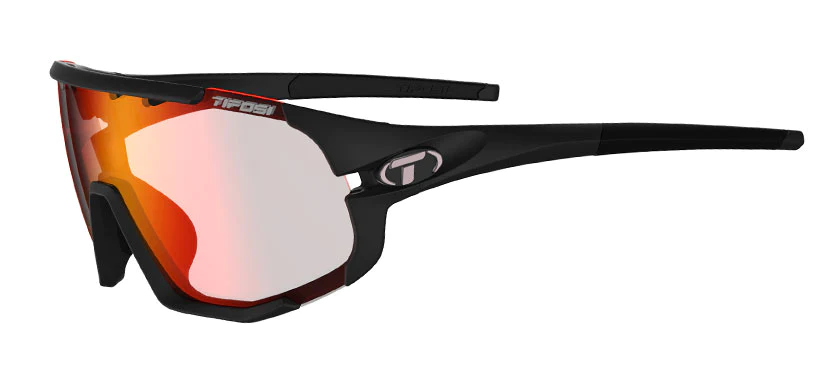
Pros: Solid coverage. Photochromic lenses provide great versatility in varied light conditions.
Cons: Ventilation slits are more suited to biking than skiing.
Fit: Medium
Photochromic lenses used to be hated on as a gimmicky marketing term. And they were, at least before the technology got as good as it is today. It used to be that photochromic lenses were either too dark or too light to truly cover the wide range of light conditions you might get out there in the world, and the transition time for the lenses to change tint was unmanageably slow. That’s no longer the case, and the Tifosi Sledge sunglasses are a perfect example.
The lenses on these guys can transition from 14-74% VLT (Visual Light Transmission, scroll to the end for a breakdown on that critical term), good enough for everything from bright sun to night-skiing. And in a world of $200 dollar-plus sunglasses, the $80 price point is a refreshing reminder that you don’t need to shell out the big bucks for high-quality optics. Our only ding is the ventilation cut-outs at the brow and temples would be great for warmer-weather activities, but for downhilling can let a bit more air in than we’d like.
CHECK PRICE ON AMAZONAnon Advocate ($229)

Pros: Style. These things look goooooood. Lenses are polarized with Anon’s Perceive tech for enhanced contrast.
Cons: Not a lot of coverage.
Fit: Medium
These things should get a six out of five for style. Especially in the white/red colorway. These guys have officially passed our tester’s classic Raybans for favorite “style-focused” sunglasses in his arsenal. The fact that they are also good for skiing is just icing on the cake. One interesting feature is the thin metal arms, which look great and sure make it’s easy to slip these sunglasses on and off, especially with a hat or helmet on. However, those thin arms do make the glasses prone to slippage when perched on top of the head, lacking the grip of a plastic arm. The lenses are great for skiing, using Anon’s Perceive polarized lens tech, and thin side shields provide some amount of side coverage, but certainly not as much as the higher-performance options above.
CHECK PRICE ON BurtonAnon Winderness ($260)
Pros: Solid performance style, good lens tech, extra clear lens.
Cons: Leaves a gaper-gap with helmets.
Fit: Medium/Large
Another option from Anon’s all-new performance sunglasses line, the Winderness provides great wrap-around coverage, has a clear lens for low light, and looks pretty darn good too. Our biggest qualm was that they do not look good with a helmet on. At least for our tester, the thinner-profile frame left an enormous gaper gap with his helmet on, which was not an issue with other sunglasses he tested. If you’re the hat-wearing type, that shouldn’t be a problem.
CHECK PRICE ON BurtonPoc Nivalis ($200)

Pros: Solid style with performance features like removable leather side shields.
Cons: Doesn’t fit larger faces.
Fit: Small
Based on the scoring criteria, these would be up there with the best of them. However, with our tester’s medium/large face, he had trouble getting these guys to fit, especially with the magnetic side shields. The shields clip onto the frame of the sunglasses and then have a small magnet that connects them to the arm of the sunglasses. On his face, the arms had to bend enough to disconnect that magnet, leaving the shields to flap around a bit. You can take the shields off, but then they’re just another pair of aviators, not truly ski sunglasses. For those with smaller faces, these would be a great premium step-up pick over the Sunski Treelines.
CHECK PRICE ON AMAZONComparison Table
| Sunglasses | Price (USD) | Additional Features |
| Poc Devour Glacial | $250 | Swappable lenses |
| Smith Wildcat | $209 | Swappable lenses |
| Julbo Density | $250 | Photochromic tint, wraparound lens |
| Sunski Treeline | $89 | Removable side-shields |
| Pit Viper Flip Offs | $100 | Flip-up lenses |
| Smith Pursuit Glacier Glasses | $270 | Photochromic lens, wraparound design |
| Tifosi Sizzle | $35 | Cheap |
| Ombraz Dolomite | $140 | Armless sunglasses |
| Pit Viper 2000s | $119 | Pit Viper street-cred |
| Tifosi Sledge | $80 | Photochromic lenses (14-74% VLT) |
| Anon Advocate | $229 | Polarized with Anon’s Perceive tech for enhanced contrast |
| Anon Winderness | $260 | Swappable lenses |
| Poc Nivalis | $200 | Removable side-shields |

A small portion of the sunglasses we’ve tried for this review from POC, Dragon, Smith, Anon and Tifosi. Photo: Ryan Salm/The Inertia
How We Tested The Best Ski Sunglasses
We’ve been conducting testing of the best sunglasses for skiing for the past three years. Gear Editor Will Sileo leads our testing group. As a lifelong skier, beginner snowboarder, and connoisseur of aprés-style, he has a wide variety of perspectives to bring to the table, as well as an intimate and up-to-date knowledge of what’s out there on the market in terms of active performance eyewear.
The search for the best sunglasses for skiing and snowboarding began with a personal journey, a search for the confluence of optimum performance and maximum steeze both on and off the mountain, because no matter how hard you charge, you gotta look good while doing so, too. Over the past three years, Sileo and the gear team have tested over 20 different pairs of sunglasses, taking into account style, coverage, lens technology, fit, additional features, and more, with their top picks compiled here for your perusal. They tested these sunglasses in a variety of settings and conditions, from the skin track and deep backcountry face shots, to crisp bluebird mornings and slushy afternoon laps in “spring ski” conditions. Our testing location was the wide-ranging expanse of the North American West, from the backcountry of Whistler, Canada, to the steeps of Jackson Hole, Wyoming and snow globe that was Tahoe, California during the 22/23 season.
Editor’s Note: This article was first published in January of 2022 after extensive testing the season before, and since then has been kept updated with the latest and greatest styles to hit the market. In our most recent update for 2024, we added three new styles including the Smith Pursuit, Julbo Density, and Pit Viper Flip Offs, and adjusted our rankings based on these new additions and continued testing.

Rockin’ the Anon Advocate sunglasses on the uphill. Photo: Ryan Salm/The Inertia
Ski Sunglasses Buyer’s Guide
Which Features Matter for Ski Sunglasses?
The things we pay attention to when choosing a pair of sunglasses to ski in are coverage, lens technology, and of course, style. Coverage matters a lot, both for protecting your eyes and for blocking the wind during high-speed descents. Lens Technology is also important in what can be blindingly bright conditions out on the snow. Different levels of polarization, or special tints like Smith’s ChromaPop, can provide different benefits for various skiing conditions. Style is a must because, of course, it is. Fit is another huge consideration, and we did our best to indicate where on the fit spectrum each pair of sunglasses lies. For reference, our tester’s face tends to fit medium/large-fit sunglasses the best, but everyone’s face is different, so we figured this was better expressed in words rather than a score based on how well the sunglasses fit my own face.

The POC Nivalis, sans side shields. Photo: Ryan Salm/The Inertia
What Are the Different Types of Ski Sunglasses?
Not all ski sunglasses were created equally. There are a few different styles that have their respective pros and cons.
Wrap-around Sunglasses are often designed with cycling and mountain biking in mind, but they also make incredible snowsports sunglasses with full coverage and solid ventilation (but not too much). They don’t tend to be the most stylish, but some (like the Pit Vipers above) have embraced the dorkiness and have turned it into a style of their own.
Glacier Glasses bring retro style but also have incredible coverage with their side shields. You won’t have as great of a field of view as with cycling-style glasses, but for high-light environments (glaciers, the tops of mountains, and the like), that can actually be a plus.
Aprés Sunglasses bring more of a laid-back, modern-style frame, meaning less coverage, but they make up for it with snow-specific tints, overly durable frames and lenses, and devilish good looks.
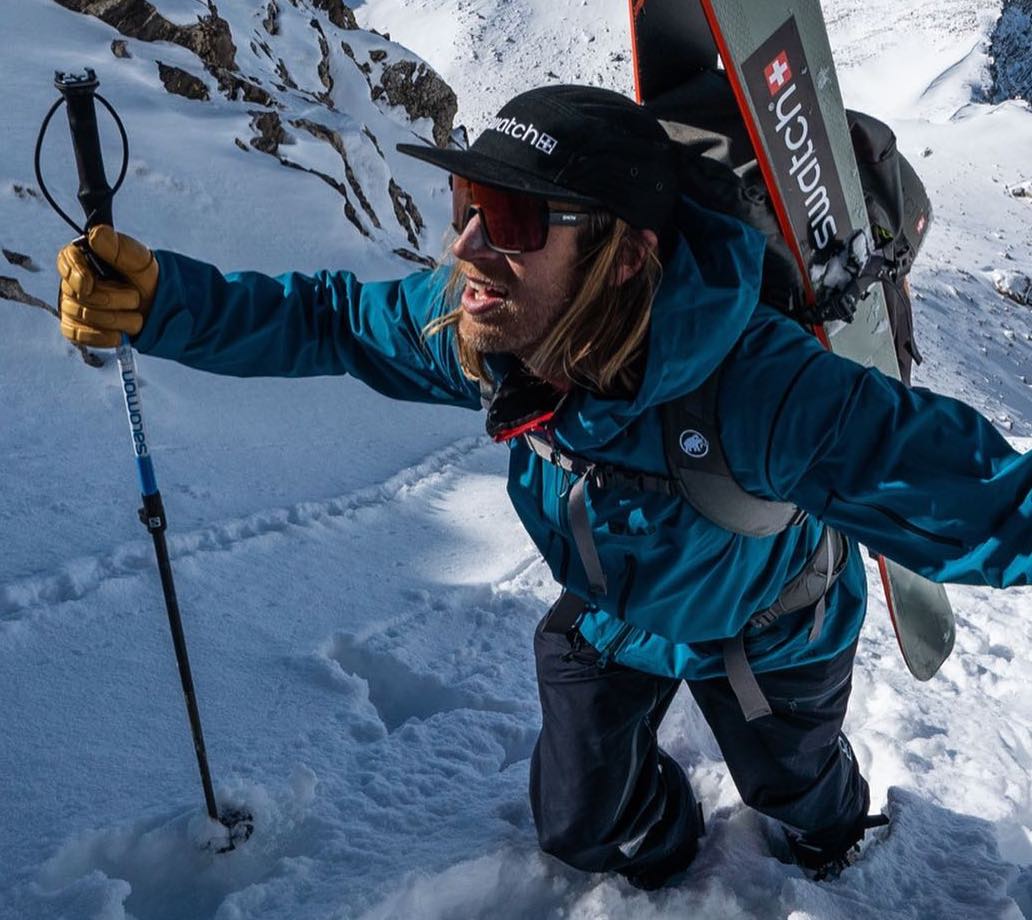
The Smith Wildcats offer a lightweight, wrap-around style with Smith’s signature Chromapop technology. Pictured, pro skier Cody Townsend sports his Matte Black/Red Mirror colorway.
Price: $229
Buy Now
Making sense of VLT and Lens Technology for Ski Sunglasses
VLT stands for Visual Light Transmission. Basically, it’s the amount of outside light that the sunglass lenses allow to reach your eyeballs. Expressed in percentages, a lower percentage means less light allowed in, which, in layman’s terms, translates to a darker lens. For cloudy days and flat light, you’ll want a higher VLT percentage to let in as much light as possible (and contrast-enhancing tech like Smith’s ChromaPop, Oakley’s Prizm, and others can help, too). For bluebird days or high-alpine glacial exploration, the lower the VLT, the better. To adapt to varied light conditions, some of the above sunglasses feature swappable lenses; others, like the Tifosi Sledge, make use of photochromic lenses which adapt to the light around them for the best tint.
Return to Comparison Table | Return to Top Picks
Editor’s Note: For more gear reviews and features on The Inertia, click here.

